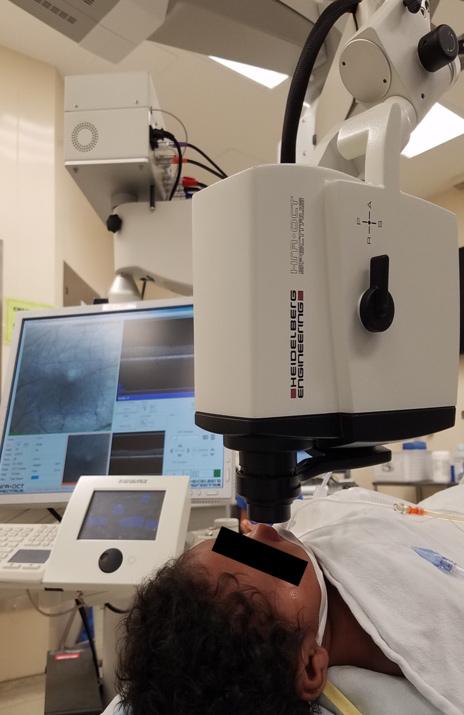
Duke scientists found that a recently popularized non-invasive technology used to detect eye diseases in adults can also be used on infants.
Using an imaging system known as optical coherence tomography angiography (OCTA), they were able to view the different layers of tiny blood vessels in the eyes of newborn babies without having to touch the baby or inject any dye.
The images obtained from the machine can help doctors see the different layers of the small blood vessels in the eye in detail. Previously, visualization of blood vessels in the retina required injecting intravenous contrast dye (fluorescein angiography), which is not only invasive, but has risks such as severe allergic reaction. The study, led by Duke fourth year medical student Tammy Hsu, was published in the journal Ophthalmology Retina this summer.
Hsu worked with Lejla Vajzovic, MD, a vitreoretinal surgeon specializing in pediatric retinal eye diseases and an assistant professor of ophthalmology, on the project. They used a portable OCTA machine to collect image of blood vessels from the eyes of infants and children undergoing exams under anesthesia at the Duke Eye Center. They have been able to image infants as young as 10 weeks old.
“OCT-A is already being used in the clinic to look at the retinal blood vessels in adults to assess diseases that affect vasculature, such as age-related macular degeneration and proliferative diabetic retinopathy,” said Hsu. “However, this has not been studied much in infants and children because OCT-A in clinic requires a certain degree of cooperation from the patient to sit still, place their face close to the machine and fixate on a target.”
 OCTA images of the blood vessels in the eyes of a 10-week old infant.
OCTA images of the blood vessels in the eyes of a 10-week old infant.“Early and non-invasive eye disease detection in children is important because children generally do not complain about problems with their vision, and we often find out very late that they have lost vision,” said Vajzovic. “Detecting and treating retinal diseases in young patients early can help infants develop normal vision and can help children see to learn in school and become successful. Non-invasive technology such as OCT-A will help us screen, diagnose and treat pediatric patients earlier and allow them to develop normally.”
The next step, said Hsu, is to image more infants and children to establish a database that can be used to compare patients with and without diseases affecting blood vessels in the eye.
Read study in Opthalmology Retina